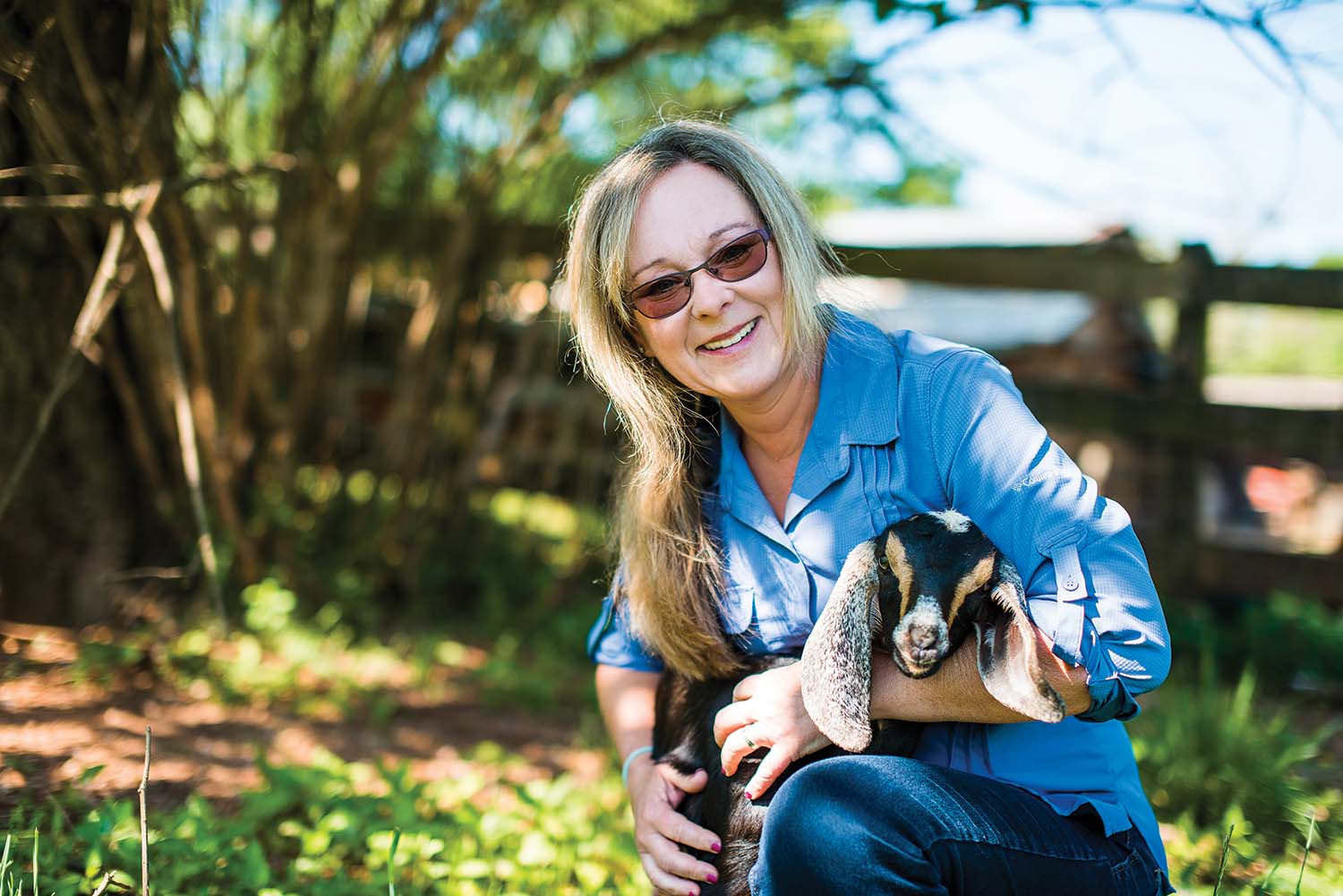
Dawn Jordan explains the science behind Polk County’s unusual growth. Photo by Karin Strickland
Polk County native Dawn Jordan is her home region’s Agricultural Economic Development Director. The local government’s ag office and nonprofits such as Growing Rural Opportunities help support young farmers and encourage crop diversification, as well as highlighting the area’s long agricultural heritage. Bold Life spoke to Jordan about the foothill county’s growing advantage.
What’s so unique about Polk County’s farming conditions?
We are in an isothermal zone, [where] warm air from the South is stopped by the Blue Ridge Mountains. Northern fronts stall out on the northwestern side of the mountain chain. Compared to many other counties in WNC, we get about a three-week head start in the spring, and the season extends about three weeks longer in the fall. You can grow for three seasons, and push it to four over the winter with a high tunnel or greenhouse. We don’t get that many days when it’s well below freezing.
The area’s topography is unusual …
Although the county is small, the elevations can change from 3,200 feet to less than 800 feet. It can be snowing on one end while people are in shirt sleeves at the opposite end. And the topography doesn’t just change from one side of the county to the other. Depending on the land, there can be dramatic shifts close together.
That affects the soil, too, doesn’t it?
A soil survey published in 1992 [lists] almost 200 pages of different soil types just in Polk County. You have everything from loamy bottom land to clay that is great for wine-grape vineyards.
Which in turn affects agricultural trends …
We have lots of younger farmers and retirees who want to start farming as a new career. They’re not farming 200 acres like some of the traditional farmers. They might have just five acres, with more intensive farming. In the past, a farm might have three or four products, at the most. Now you have 10 different products coming off of a much smaller farm … [including such crops as] garlic and Jerusalem artichokes. The largest producer of sprouts in the Southeastern United States has been here for more than 10 years.
Today’s consumers will pay more for quality, won’t they?
Yes. Previous generations were fast-pacing food for convenience. But agricultural marketing is educating people. A commercial chicken from Big Ag goes from egg to harvest in six weeks. That’s not natural. It normally takes five or six months for a heritage chicken, which inherently increases cost but also quality.
You’re also regenerating a lifestyle that some see as threatened.
Polk County has always been small and agriculture-based. We like it that way. There’s been a lot of change and development in our area. But we surveyed citizens about what they wanted in the future: they said to maintain the rural quality of life.
The Polk Fresh Farm Tour happens Saturday, June 23, 9am-2pm; local wineries are open 1-7pm. Admission is $25/carload. See growrural.org or polkcountyfarms.org for more information.
